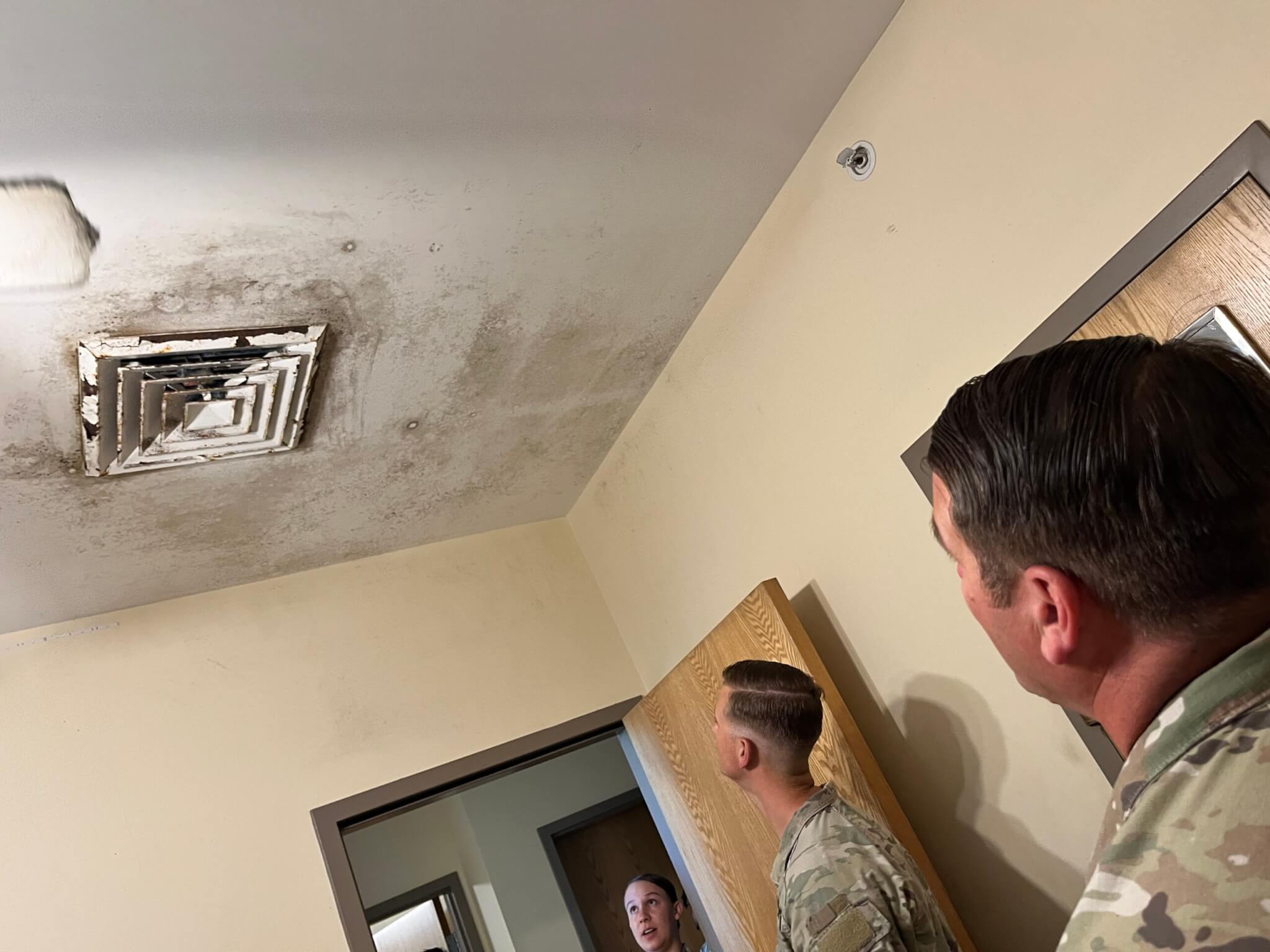Mere months after several soldiers took to social media to reveal mold issues at Fort Stewart, Georgia, two members of the 3rd Infantry Division have created a tool to help address – and alleviate – the problem.
Pvt. Salem Ezz and 1st Lt. Chris Aliperti, stationed at Fort Stewart, Georgia, developed the Mold Conditions Awareness Tool (MCAT), which was named the “top innovation” at Dragon’s Lair 8.
Aliperti said Dragon’s Lair is a great platform to showcase soldiers’ innovation work, as well as a platform to talk to, and get their ideas in front of, leaders.
“I was very happy to be able to go in with something proved out,” Aliperti said of the “Shark Tank”-style competition. “… Data competitions are cool, but it’s really about building something that helps soldiers.”
Ezz and Aliperti began working on the MCAT in October 2022. The device is still under development, but the duo had a “proof of concept” for the competition that showed it can be scalable in the future.
“It [mold] had been issue for a while at Fort Stewart, and a lot of us didn’t realize it,” Aliperti said. “Fortunately, it took a kind of kick like that to see how bad the living conditions were for some of these soldiers. And then we also, on the flip side, got to sit in on some of the meetings and watch some of the protocols that were being implemented to try to combat it.”
Last fall, 30 Fort Stewart soldiers attended a Mold Assessment and Remediation in Buildings training. Participants received a mold inspector/remediator certification following completion of the course and an exam.

The civilian aide to the secretary of the Army also visited the barracks following the social media posts from 3rd Infantry Division soldiers.
Aliperti said the “main use case” for their device was deployed soldiers. When the duo began creating the MCAT, there were rapid deployments to Europe.
“Being one of the largest combat divisions, we’re constantly having soldiers deploy all around the world,” he said. “[So we] mirror scaling of soldiers being deployed.”
Aliperti said that from their start in October, it took about a month to build the first sensor. By January, he said, the first pilot was with sensors was running in a soldier’s room.
“We’re still gradually building it up,” he said. “It’s definitely still in development.”
The tool itself is a wireless, temperature and humidity sensor – similar to a thermostat, but built in-house for about $8. The processor in the device communicates over Wi-Fi. Ezz said there are three small sensors per room that “talk” to a larger sensor.
“That bigger one is what connects the two to the internet and is actually able to communicate it out,” Ezz said.
The data can be viewed on an app that’s accessible anywhere, rather than strictly on an Army computer, according to Ezz.
The biggest challenge now, according to Ezz, is having a strong Wi-Fi network throughout the buildings.
The first pilot test, according to Aliperti, had 27 sensors across nine rooms. The second version placed 144 in 36 rooms across an entire building.
“We’re still not finished, but we can learn from the larger scale,” he said.
Aliperti said the MCAT was developed through the innovation lab at Fort Stewart.









































